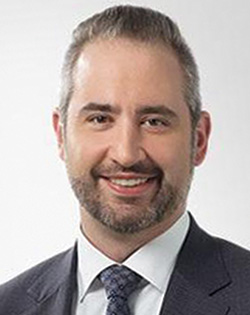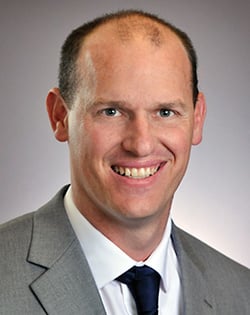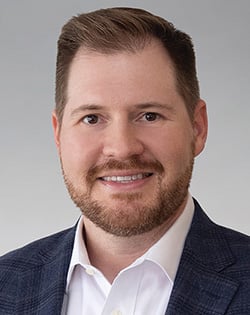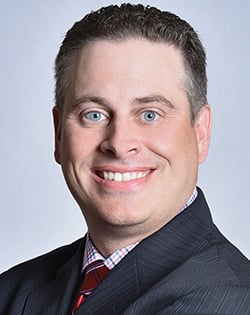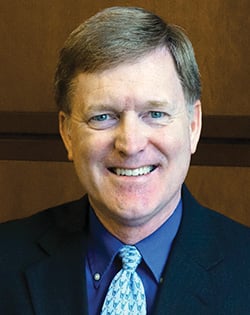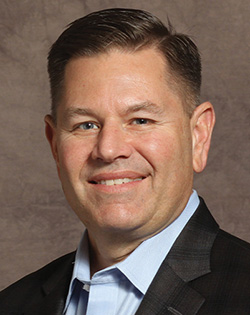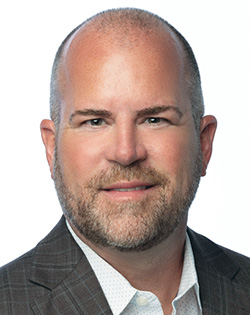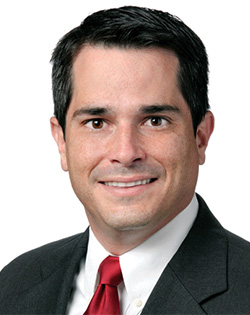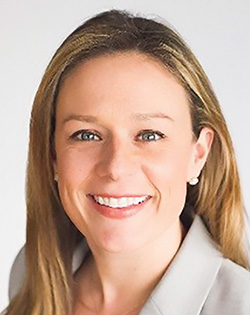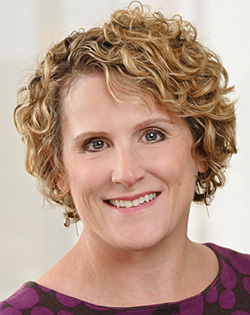

2025 Schedule
8:00 AM - 9:15 AM
With increased life expectancy and more people expected to live to age 100, there are many ripple effects to consider. Employees may choose to work past traditional retirement age, and career paths will likely reflect this. What implications will this have on health and retirement benefit strategies, as well as social safety net programs? With multiple generations in the workplace, do your employees perceive that you are doing enough to meet each of their needs? This session will delve into the need to adopt new strategies to attract and support a diverse and multigenerational workforce.
9:30 AM - 10:30 AM
This session queues up 2 1/2 days of sessions and discussion, created by and for Canadian attendees. Stay up to date on the latest legislative, regulatory activity and case law decisions at the federal and provincial levels most likely to affect your benefits and pension plans. What will new federal leadership mean for benefits decisions and compliance requirements?
9:30 AM - 10:30 AM
A guide to navigating the most important benefits-related legal decisions, this session provides an overview of important developments, regulatory challenges and corporate governance, along with guiding principles and cases that illustrate their necessity
Downloads
11:00 AM - 12:00 PM
Absence management and employee mental health services are often handled by separate teams with limited collaboration and cooperation. With more than one in ten of all leaves of absence being due to mental health (a 300% increase over a five-year period), learn how combining these two programs can result in stronger outcomes for employers and employees alike. Get real-life examples and case studies to detail how integrating absence management and employee behavioral health services can deliver improved results for organizations and individuals, along with actionable strategies for integrating absence and mental health offerings to reduce overall leave and improve workplace outcomes.
Takeaways
- Best practices for both absence management and employee behavioral health programs
- Strategies to effectively integrate employee behavioral health services with absence management
- How employers and employees benefit from integrating these currently disparate programs
11:00 AM - 12:00 PM
Benefits equity is a growing concern for organizations with diverse and global teams. Many employees struggle to understand their options because of language barriers, complex information or lack of tailored resources. This can result in inequities that affect job satisfaction and well-being. The session will focus on clear strategies to make benefits information more accessible. Learn how to create messaging that works for different groups, like remote teams or hourly workers, and how to simplify benefits education using tools like plain-language guides and interactive decision aids. Real-world examples will show how these approaches can close gaps and increase participation.
Takeaways
- Identify communication barriers that can hinder benefits understanding
- Tools and methods to create simple, inclusive resources for benefits education
- Strategies to track participation data and adjust communication plans for better results
11:00 AM - 12:00 PM
Get an overview of recent and forthcoming IRS and DOL guidance, including the current state of the DOL’s Retirement Security Rule, final changes to the DOL’s Voluntary Fiduciary Correction Program (VFCP), and the update to the IRS’ Employee Plans Compliance Resolution System (EPCRS) along with any relevant SECURE 2.0 guidance that comes out in 2025. Don’t miss this opportunity to ensure your retirement plan is being managed with fiduciary and compliance best practices.
Takeaways
- Overview of recent SECURE 2.0 developments from IRS and DOL
- Impact of changes under the IRS correction program (EPCRS)
- Tips for complying with the final changes to the DOL’s fiduciary correction program
11:00 AM - 12:00 PM
Many workplace benefit programs fall short in addressing the specific health needs of women, who make up half the workforce. Research shows that claims for absences, disabilities and prescriptions among female employees significantly exceed those of men, yet the root causes often go unaddressed. Join us for a discussion of these gaps in midlife care, along with insights and metrics to make the business case for action.
Takeaways
- The financial and productivity toll of unmet health needs
- How health care shortfalls amplify workplace claims and proven solutions that offer effective strategies and results
- Insights, metrics and strategies to advocate for prioritizing women’s health in workplace programs
1:30 PM - 2:30 PM
As medical expense trends reach their highest levels in over a decade, nearly half of employers anticipate their health care costs will exceed budget. The WTW 2024 Best Practices in Healthcare Survey highlights the critical strategies that forward-thinking and cost-efficient employers are adopting to manage health care costs while enhancing employee well-being, including financial management and member affordability, strategies for optimizing provider networks, and the latest trends in pharmacy benefits and innovative approaches to medication management. Join us to gain valuable insights and practical strategies to help you navigate the complex landscape of health care cost management and employee well-being.
Takeaways
- Strategies to balance affordability with quality of care and employee experience
- Care management options and best practices
- Identify and prioritize action items for your plan
1:30 PM - 2:30 PM
This session will highlight global case studies (primarily in the APAC, AMERS and EMEA regions) and successful global well-being programs and discuss initiatives like how to integrate volunteerism time off with well-being, reviewing employer incentives vs. intrinsic motivation, and how to tap into all your data points to tell your story. Discuss how diverse well-being programs are critical to engagement and how needs change through life stages. Stress support is critical to caregivers, and family and friends also play an essential role in an individual attaining their well-being goals.
Takeaways
- Respecting and understanding cultural differences to create an inclusive and supportive environment for well-being
- A well-being strategy integrated with the larger company strategy is critical for its success
- Ensure your well-being solutions are diverse and promote individual intrinsic motivations
1:30 PM - 2:30 PM
The renewed interest in defined benefit (DB) solutions is not about the traditional DB plans, but rather innovative “hybrid” elements that blend DB-like features with those of defined contribution (DC) plans. These offer the best of both worlds: the security and predictability of DB plans and the flexibility and portability of DC plans. Learn about the growing interest in hybrid plans, how they work and their balanced approach to retirement planning by combining the stability of DB plans with the growth potential of DC plans. Explore how these plans can enhance DC retirement income strategies, offering more options for employees and improving retirement security.
Takeaways
- How talent and recruitment efforts are sparking innovation in retirement plan design
- How hybrid DB and cash balance plans can help mitigate risks in retirement
- First steps toward assessing contributions and guaranteed income options in new models
1:30 PM - 2:30 PM
In recent years, there have been significant and welcome innovations in both defined benefit (DB) and defined contribution (DC) pension plans in Canada. This session will provide a comprehensive review of the latest developments and offer insights into the pros and cons of new DC pension solutions, new DB pension solutions and new decumulation options, including VPLAs and ALDAs.
Takeaways
- Choosing decumulation options for your DC plan
- Why multiemployer pension plans are becoming popular alternatives to single employer DC or DB pension plans
- Potential legislative changes that impact pension plans
2:45 PM - 3:45 PM
In the face of rising health care costs and the growing prevalence of complex conditions like cancer, employers are being increasingly challenged by an influx of high-cost claims. This session will look at innovative solutions to this problem and will showcase how 3M, in collaboration with Mayo Clinic, leveraged a Center of Excellence (COE) model alongside integrated vendor partnerships to improve health outcomes for its members, while also reducing costs.
Takeaways
- How COE models and vendor strategies improve employee health and drive cost savings
- Navigating the challenges of selecting, implementing and integrating a COE program in your organization
- Best practices for ensuring collaboration between a COE and your existing vendor ecosystem
2:45 PM - 3:45 PM
Employers are increasingly looking to third-party administrators (TPAs) for innovative solutions to control costs while maintaining high-quality care in their self-funded health plans. This session explores advanced cost-containment strategies that go beyond traditional approaches like high-deductible plans, providing actionable insights into how to leverage plan data, create a customized plan design and promote clinical programs. Learn more about leveraging plan data, customized plan designs, stop-loss coverage, and identifying utilization and clinical trends. Get actionable strategies to balance cost containment with meaningful access to care and value to employers and participants.
Takeaways
- Innovative cost-management approaches that balance savings and care quality
- Actionable strategies to address high-cost claims and chronic conditions
- Evaluate the risks and rewards of alternative pricing models
2:45 PM - 3:45 PM
Explore the evolving landscape of cybersecurity threats targeting employee benefit plans as well as privacy law compliance. Discuss common vulnerabilities, effective prevention strategies and response protocols to safeguard sensitive employee data.
Takeaways
- Identify prevalent cybersecurity threats to employee benefit plans
- Implement best practices for preventing data breaches
- Develop effective incident response plans to mitigate potential damages
2:45 PM - 3:45 PM
The OCIO (outsourced chief investment officer) market continues to grow rapidly, converting from the traditional, nondiscretionary model. Plan sponsors do so for many of the perceived benefits but often do not also recognize the additional duties and pitfalls this change entails nor the conflicts it can create. Whether it's monitoring, fiduciary changes, fee structure or governance, "going OCIO," if not done correctly, can actually become a negative experience. Get an objective and detailed view of these aspects and leave fully engaged with practical solutions to improve or implement an OCIO experience.
Takeaways
- Which plans do not need to go OCIO?
- Prudent governance steps and procedures to adopt
- Metrics and outcomes to evaluate your OCIO experience
4:00 PM - 5:00 PM
This session delves into ways to effectively and ethically apply techniques to address human biases and social and cognitive factors that influence everyday decisions. Discuss what ethics means (and doesn’t mean), perceptions and expectations of ethical behavior, and why ethics matter to business and to decisions around administering a health or retirement benefits plan and your fiduciary duty to participants.
Takeaways
- The human behavioral biases relevant to health and retirement benefits issues
- Ethical habits to embrace as industry professionals
- Managing ethical dilemmas and best practices
4:00 PM - 5:00 PM
What if one of your health plan members was given a prescription to walk and lift weights instead of being prescribed pills? The "Movement as Medicine" concept is becoming more popular as individuals and employers acknowledge the vast benefits of regular physical activity. Whether you call it movement, exercise or physical activity, the science is the same: We should all be moving more. Get practical examples of integrating movement into the workplace, examine considerations around policy and program design, and explore evidence-based insights into how different exercise modalities can address specific chronic conditions, such as heart disease, diabetes and cancer.
Takeaways
- Health and financial risks of physical inactivity in the workplace
- The business case for movement promotion
- Actionable strategies for integrating exercise into workplace policies
4:00 PM - 5:00 PM
With SECURE 2.0 and the inclusion of the $1,000 withdrawal provision, Congress recognized the critical role emergency savings solutions play in improving worker financial security and retirement outcomes. The Fresh Market (TFM) partnered with Commonwealth on two pilot programs with distinct approaches. One involved a fully digital solution with an app and online resources, and the second involved in-person on-site meetings and account creation. Additionally, we will discuss communication strategies and design of incentives to drive engagement and how TFM employees have utilized the new $1,000 withdrawal provision and its impact on other withdrawal types and overall savings.
Takeaways
- How to implement a low-cost, high-impact emergency savings program
- Real-world outcomes on the activation and sustainability of employee emergency savings
- Data-driven insights on how direct deposit and incentive options can help overcome employee savings inertia
4:00 PM - 5:00 PM
As a follow-up to the morning session, this is an opportunity to hear more of the legal cases that continue to shape the benefits landscape
Downloads
8:00 AM - 8:30 AM
8:30 AM - 9:30 AM
With a new session of Congress well underway, what legislative and regulatory activity will impact your benefit plans? Get an insightful analysis of the policy and compliance requirements and what the rest of the 119th Congress may bring.
8:30 AM - 9:30 AM
Since 2021, Environics Research has interviewed 1,000 group plan sponsors annually across Canada to understand what they're looking for in an insurance provider. The session will outline some key themes the study uncovered about plan sponsors' needs, and year-over-year trends that will help inform the industry about what's to come.
Takeaways
- Key attributes/drivers that plan sponsors look for when evaluating plans
- How the importance of these attributes has changed year-over-year
- How plan sponsors currently use AI in their business and how they anticipate it to help them
10:00 AM - 11:00 AM
Cancer is now the leading cost driver of employers’ medical claims spend. Learn how employers are developing and implementing cancer strategies to mitigate costs and support employees at every stage of the journey. From prevention and early detection to treatment and survivorship, this discussion will explore the key components of an effective cancer benefits program. Learn about innovative solutions, best practices and actionable steps to address the growing impact of cancer on the workforce.
Takeaways
- Strategies for integrating cancer care into your benefits offerings
- The role and ROI of early detection and education in reducing costs and improving outcomes
- Resources to navigate treatment options, improve quality of care, and support employees and their families
10:00 AM - 11:00 AM
Some things about eldercare never change, such as those prophetic words of Rosalynn Carter: "There are only four kinds of people in the world: those who have been caregivers, those who are currently caregivers, those who will be caregivers and those who will need caregivers." However, the world itself has changed, along with eldercare parameters. Eldercare's impact on employers and employees will continue to increase as the number of seniors needing support more than doubles (projected to grow by 120% by 2050 according to NIA Policy Series 2019).
Takeaways
- The impact of health span vs lifespan for employers, seniors and their caregivers
- Working in partnership - the responsibilities of both employers and employees to help maintain employee health and productivity
- Resources and tools to educate, support and reduce stress, and minimize presenteeism
10:00 AM - 11:00 AM
In today’s competitive talent landscape, organizations must continuously evolve to meet the needs and preferences of their workforce. Learn how Land O’Lakes introduced a market-leading total rewards strategy centered on meaningful choice and employee well-being, including a revamp of the health plan design, a complete overhaul of the financial well-being offering, key changes to the 401(k) plan, along with the introduction of a market-differentiating financial well-being account, giving employees the freedom to allocate funds each year toward their health care, family needs or emergency savings. This session will provide practical insights and actionable takeaways for benefits and HR leaders to implement similar strategies in their organizations.
Takeaways
- How to effectively gather inputs to inform a major strategy shift
- How to build a comprehensive strategy and then prioritize program changes and roadmap over multiple years
- How to meaningfully support financial well-being in an impactful yet personalized way
10:00 AM - 11:00 AM
Pooled Employer Plans (PEPs) are transforming the retirement benefits landscape, offering innovative solutions to employers of all sizes. This session will provide a deep dive into the mechanics, strategic benefits and challenges of adopting PEPs, along with case studies, trends and actionable insights to evaluate this emerging option for your organization. Leave with a clear framework for evaluating the fit of PEPs within your organization's defined contribution strategy.
Takeaways
- The strategic advantages of PEPs to enhance the retirement plan experience
- Actionable data to inform strategic decisions
- Practical applications and emerging trends to align with your organizational strategy
11:15 AM - 12:15 PM
Unlock the science of mental health and well-being in this engaging session led by an expert in neuroscience and health technology. Discover how understanding the brain’s mechanisms can revolutionize mental health strategies for individuals and organizations. In the session, we’ll examine how evolving neuroscience explains the universal importance of mental health, from the developing adolescent brain to the aging mind. Learn why mental health is not just a personal issue but a generational imperative. This session integrates neuroscience, practical tools and innovative technology to help you master the art of mental health and resilience.
Takeaways
- Explore the latest neuroscience on the integration of physical and mental health
- Science-backed techniques that improve both mental and physical health
- Discover how digital tools and platforms are making mental health care more accessible and convenient
11:15 AM - 12:15 PM
Employees are anxious about their finances. Over 45% of the population lack basic financial literacy and 60% are stressed about retirement preparation, affecting their overall well-being. How can you properly engage employees to provide them with tools to optimize their plan benefits, increase their financial knowledge and build confidence to positively impact their at-work engagement? Delve into proven strategies to significantly boost engagement by providing tailored guidance and tools for specific, targeted audiences. Learn how one organization increased its engagement from 42% to 83% over eight years through the implementation of targeted tactics.
Takeaways
- Craft effective communication and educational materials to support employees' unique needs
- Leverage employee resource groups to foster a culture of financial wellness
- Measure and analyze employee engagement metrics to refine strategies
11:15 AM - 12:15 PM
The recently published final rules for mental health parity under the Mental Health Parity and Addiction Equity Act (MHPAEA) are notably different from the proposed rules published last year by the DOL, HHS and the Treasury. The final rules establish new standards for NQTLs, as well as additional definitions and the requirement to collect and review data outcomes. These stricter compliance obligations rely on cooperation from carriers and other stakeholders. What does this mean for your compliance efforts? Gain a deeper understanding of the current landscape and learn actionable steps to support your health plan efforts.
Takeaways
- Updated legal requirements and compliance standards
- How plan sponsors and carriers should partner for data collection and analysis
- Practical strategies and pitfalls to avoid to meet the new requirements
1:30 PM - 2:30 PM
After considerable innovation and evolution of capital accumulation plans, CAPSA has issued an updated Guideline No. 3, its first major revision since 2004, applicable to any savings and decumulation plans. The updated guidelines introduce new expectations and a framework for CAP governance, focused on creating clear accountability, mitigating risks and future-proofing governance processes. The Guidelines support RRSP and TFSA savings programs and putting processes and recommendations in place to help your members achieve the best financial outcomes possible. Attend this session to learn about the Guidelines, what the governance framework should include and what you need to do to become compliant.
Takeaways
- Plan sponsors’ obligations around the selection and oversight of service providers
- Increased transparency around member fees and expenses
- Ongoing member communication and decision-support tools
1:30 PM - 2:30 PM
Job loss can be a traumatic experience for the employee and their family. In the U.S., nearly 50% of employees live paycheck to paycheck, and 60% rely on employer-sponsored health insurance. What policies and practices do you have in place to help ease the job loss transition? What role do you play once an employee separates to ensure their needs are being met throughout the complex network of third-party providers? Join us to learn about a proactive separation process, including benefits, compensation and final payout policies and practices, legal and ethical considerations, and providing ongoing support services for former employees and their families.
Takeaways
- Learn how to proactively design a separation process
- Focus on a positive “employee experience” during the separation process
- Understand when it is appropriate to make an exception to process and intervene to help a former employee
1:30 PM - 2:30 PM
The pharmacy benefit manager (PBM) industry is at a critical inflection point, with transparency and accountability taking center stage. This session will delve into the evolving landscape of PBMs, highlighting the push for reform and the implications for employers, plan sponsors and members. Get a thought-provoking exploration of key topics such as the impact of transparency initiatives and regulatory changes on PBM practices, current trends in drug pricing, rebates, and how PBMs influence the cost of care and the role of emerging PBM models in addressing long-standing challenges and delivering value to stakeholders.
Takeaways
- How transparency initiatives and regulatory changes are reshaping the PBM landscape
- Latest trends in drug pricing, rebate structures and the hidden fees that can impact overall health care costs
- How emerging transparent and patient-focused PBM models are addressing longstanding inefficiencies
1:30 PM - 2:30 PM
The rise of retirement income products has been driven by several factors, including longer life expectancies, the decline of traditional DB pension plans and regulatory changes. As a result, DC plans have increasingly focused on providing sustainable income solutions for retirees. Hear about key trends in this space including in-plan annuities, hybrid TDFs and managed accounts, and systematic structured withdrawal programs. Key considerations for plan sponsors include defining clear objectives, understanding participant demographics, evaluating the range of available products, regulatory compliance and effective communication strategies.
Takeaways
- How retirement assets are accumulated and available income products
- Pitfalls to avoid in evaluation, selection and implementation
- A fiduciary governance framework for compliance and monitoring
2:45 PM - 3:45 PM
While employers increasingly offer women’s health benefits, most focus narrowly on family building—addressing only 10% of women’s health claims. Fragmented care for the other 90% drives substantial hidden costs, making women’s health a top five medical spend alongside cancer and MSK. Examine how uncoordinated care for conditions like endometriosis, PCOS and menopause creates a cascade of unnecessary procedures, prescriptions and specialist visits. A rigorous claims analysis demonstrates how comprehensive care models can reduce total cost of care by $2,434 per member in year one by preventing unnecessary gynecological surgeries (averaging $19,000 each), reducing prescription spend, eliminating redundant testing and improving preventive care compliance.
Takeaways
- How to identify hidden women’s health costs in claims data
- How to calculate the true ROI of comprehensive women’s health care models
- Actionable strategies for implementing value-based women’s health care solutions that reduce total cost of care while improving clinical outcomes
2:45 PM - 3:45 PM
Climate change is often seen as a logistical or business continuity challenge, but it’s also a human capital challenge—affecting employees, their families and their productivity. Eco-anxiety, a growing phenomenon, can lead to disengagement and burnout, climate disasters impact livelihoods and access to care, and excess heat can be fatal. This session will review data from psychiatry and neuroscience; illustrate strategies such as integrating climate awareness into mental health programs, environmental time off or disaster relief funds; and empower leaders to recognize and address climate-related distress. Drawing on examples from around the world, we will share how organizations turn eco-anxiety into engagement and resilience.
Takeaways
- How climate change, including heat and eco-anxiety, affects employee health and productivity
- Innovative benefits to address climate-related physical and mental health challenges
- Strategies to build resilience and align workplace benefits with sustainability goals
2:45 PM - 3:45 PM
This session will illustrate various case studies and scenarios in which AI can be used in retirement plan administration. For example, explore using a natural language processing tool to answer participant questions that necessitate a review of plan documents, with nontechnical prose and references to the documents and sections, or using a live-chat feature to provide plan-specific information and universal plan limitations. It can also address needs beyond the retirement plan, such as a machine-learning AI tool to review spending habits, create a budget and look for savings opportunities.
Takeaways
- Practical applications of AI tools for plan administrators
- Practical applications of AI tools for plan participants
- Risks and pitfalls of various AI tools
2:45 PM - 3:45 PM
Studies show that finances are the number one source of stress for employees. One in five employees surveyed admitted that their productivity at work has been impacted by financial worries, and 60% of employees surveyed by the Financial Health Network said they’d be more likely to stay with an employer that offers a program designed to help them better manage their finances and improve their financial well-being. Recent changes to the CAP guidelines recommended that Canadian employers that offer a workplace savings plan to their employees should also proactively provide information and resources that help boost that understanding and improve their financial health.
Takeaways
- Identify how financial stressors impact employee productivity and turnover
- How to build a simple, effective financial wellness program that actually helps your employees
- How to leverage your group retirement provider to boost financial literacy among your employees
4:00 PM - 5:00 PM
4:00 PM - 5:00 PM
4:00 PM - 5:00 PM
4:00 PM - 5:00 PM
4:00 PM - 5:00 PM
Post-COVID health care cost pressures have prompted plan sponsors to proactively assess the risks and impacts of GLP-1 diabetes medications and anti-obesity medications (AOMs). Rather than making a binary coverage decision, a nuanced and data-driven consideration is necessary as this class of drug gains additional FDA-approved indications (i.e., sleep apnea, heart disease, etc.). When considered in conjunction with workers’ compensation/OSHA recordables, these variables underscore the need for granular-level insights and financial modeling, particularly as the drugs’ costs decrease and the eligible population expands. Learn about data and demographic modeling to identify emerging risks and costs to your plan.
Takeaways
- Innovative approaches to mitigate medical plan cost trend
- Using data to understand the specific risk and costs of GLP-1s and AOMs
- Case studies and specific steps to help determine whether to cover these classes of drugs
8:00 AM - 9:00 AM
With the dust still setting from the pandemic and the Great Resignation of the past five years, it’s clear that employers need competitive benefits to attract and retain top talent. With shifting expectations and the looming role of AI and other technological factors, leaders need a strong understanding of what employees want and expect from a workplace, from work-life balance support and flexibility, career development and retirement planning, to personalized benefits to retain their talent for organizational success. Join us for a discussion of how the employment relationship is being reframed through the lens of workplace culture and support.
9:30 AM - 10:30 AM
Amid the pandemic and a tight labor market, many employers increased their benefits budgets to compete for talent. Recruitment and employee experience were the primary drivers of benefits decision making. But now, employers need to make a critical shift to evaluating the health and cost outcomes of the benefits they provide. But first, employers must ensure that they are adequately measuring their performance. Finding the right combination of measures that aligns closely with their benefits strategy is a challenge. This session will review how employers should be thinking about their measurement strategies and to help keep their workforce healthy and productive.
Takeaways
- Evaluate available health benefits measures by weighing effort vs. value provided
- Find the right combination of measures that aligns closely with your benefits strategy
- Apply a framework to guide creation and implementation of a measurement plan
9:30 AM - 10:30 AM
Heightened disclosure requirements imposed on group health plans, along with opaque fee and benefit structures, have contributed to a new focus on the fiduciary risks inherent in the administration of those plans. But while sound governance—including the creation of a fiduciary committee and committee charter—is important for all plans, an off-the-shelf strategy can actually increase risk. This session will explore how to create a customized governance structure, reflecting the uniqueness of individual plans and corporate decisions about risks and responsibilities.
Takeaways
- Key variables employers should consider when creating fiduciary governance structures
- Deciding who should serve on a fiduciary committee and how to assign fiduciary roles
- How plan governance decisions can mitigate personal and corporate risk
9:30 AM - 10:30 AM
There is no fiduciary duty to assist participants in avoiding leakage, and many plan sponsors prefer to avoid obstacles to plan participation. Congress has added additional liquidity options in laws such as Bipartisan Budget Act of 2018, SECURE and SECURE 2.0, CARES and CAA, features of ever-greater liquidity that clash with the concept that
plans are exclusively for retirement preparation. Plan sponsors could curtail all leakage by precluding all pre-retirement distributions—inservice, hardship or post-separation. However, this may prompt many to limit contributions to only those amounts they are willing to earmark solely for a distant and uncertain retirement, affecting their retirement readiness.
Takeaways
- Replacing liquidity that is really leakage, with steady contributions and ready access to liquidity
- Why new leakage opportunities in employer-sponsored plans are not beneficial for participants
- Why you should embrace asset retention, asset aggregation and account consolidation
9:30 AM - 10:30 AM
This session discusses awareness and emotional intelligence as prerequisites for interpersonal success. Learn about the transformative impact of focusing on intrapersonal skills in leadership training, including the value of intrapersonal skills as a cornerstone for successful leadership and how prioritizing self-care and selfmanagement enhances the ability to lead effectively. By cultivating intrapersonal competencies, we empower leaders to understand their values, motivations and behaviors, which ultimately strengthens their interpersonal skills. This holistic approach not only fosters effective leadership but also enhances organizational culture and collaboration, showcasing that true leadership starts from within.
Takeaways
- The critical relationship between intrapersonal skill development and effective interpersonal leadership capabilities
- The importance of intrapersonal skills as a foundation for leadership success
- The role of self-care and self-management in the development of effective leaders
10:45 AM - 11:45 AM
Health benefit trends are increasing at a rate nearly double prepandemic levels. Can employers continue to offer the same benefits as before? Alternative health plans are growing in popularity to offer lower out-of-pocket costs for members when they select health care providers with higher quality health outcomes. This session will compare these new plans to traditional health plans, share key considerations when evaluating alternative health plans, realistic outcomes to expect and lessons learned from early adopters. Gain a greater understanding of these options to help determine whether these types of plans are a good fit for your company’s benefit strategy.
Takeaways
- Structure of alternative health plans and how they differ from traditional PPO-, HSA- or HRA-based plans
- Key considerations and realistic outcomes to expect when considering alternative health plans
- Scenarios when alternative health plans can make sense for an employer’s benefit strategy
10:45 AM - 11:45 AM
Overdose deaths in 2022 were 18 times greater than in 2013, with billions of dollars in lost work productivity, days of work missed and lost wages. Recognizing and responding to active substance use disorder (SUD) in the post-COVID workplace is a must for every employer; yet, due to remote assignments, flexible work arrangements, negative psychological and social effects of the pandemic, employers have less access and observation of employees than previously and often struggle to respond to this need. Get an in-depth analysis of employer policy and benefit design recommendations, and explore legal protections and requirements for a comprehensive employer response to today’s SUD crisis.
Takeaways
- Learn to identify the presence and effects of active SUD in on-site and remote employees
- Complying with MHPAEA, HIPAA privacy and security standards and ADA accommodation standards
- Evaluate tax-qualified and other ancillary employee benefit programs to create an adequate employer response
10:45 AM - 11:45 AM
Your drug plan is a key part of your benefits package and can help improve the health and well-being of your workforce, but it also comes with a significant cost. This session will provide an environmental scan and update on hot topics and emerging developments and trends impacting Canadian private drug plans.
Takeaways
- The potential impact of national pharmacare on private plan coverage
- The federal strategy for drugs for rare diseases
- What’s next for obesity drugs, biosimilars and specialty generics
10:45 AM - 11:45 AM
Protecting an employee’s retirement plan assets from potential security threats and attacks is a critical issue. It is pivotal for leadership to understand where their organization stands in terms of protection, potential vulnerabilities and how to respond to an incident in the event of an attack. This session will discuss the types of threats facing today’s employee benefit plans, methods of protection from cyberattacks and the ERISA Advisory Council’s Report on Cybersecurity Issues in Benefit Plans.
Takeaways
- Latest developments in cybersecurity
- Where to focus valuable risk mitigation resources
- Develop and refine a framework of knowledge to plan ongoing security efforts and response strategies
12:00 PM - 1:00 PM
On a national scale, men as an overall group report 17% utilization of mental health resources, which drops to 6% for African-American men. Join us for a discussion of how Great Lakes Water Authority reversed this trend to achieve a remarkable 40% increase in mental health engagement within just one year and created a more inclusive and supportive environment for all employees.
Takeaways
- Strategies and interventions that led to this substantial improvement
- Insights and practical solutions that can be applied across various organizational contexts
- Innovative approaches that can transform mental health support in the workplace
Downloads
12:00 PM - 1:00 PM
While automatic enrollment is important to help employees save for retirement, the downside is often an “out of sight, out of mind” attitude. For those automatically enrolled in a 401(k) plan, are many missing out on taking a proactive approach to their retirement? Do participants proactively add a beneficiary, do they increase their deferral percentage, do they understand the plan and its available options? Seneca Foods has found that after automatic enrollment and auto increase, participants often do little else, especially if their knowledge or understanding is lacking. Learn about their proactive approach that helps increase participant engagement and retirement savings.
Takeaways
- The surprising advantage of paper forms
- How one-on-one meetings and a personalized approach drive retirement savings, engagement and resource utilization
- Balancing the individualized approach with efficiency
12:00 PM - 1:00 PM
Nearly 40% of workers in the United States live with chronic pain (pain that lasts more than three months), which can lead to increased absenteeism and presenteeism, reduced productivity and efficiency, higher turnover rates and recruitment/training costs, and elevated health care and disability expenses. In addition, employees suffering chronic pain are more likely to experience loneliness, less likely to view their job as rewarding, and more likely to perceive discrimination at work and increased levels of anxiety and depression. Creative strategies are needed to support these overlooked workers to combat this silent epidemic.
Takeaways
- Understand the biopsychosocial model of pain care and related value-based care designs
- How to foster inclusivity and reduce stigma for chronic pain workers
- Learn key steps to develop a workforce chronic pain action plan
Pricing
ISCEBS or International Foundation Member
$1,550 through 7/21/26
Nonmember *
$1,815 through 7/21/26
New CEBS Graduate or New GBA or RPA Designee *
$1,350 / $1,510
* Includes a membership






